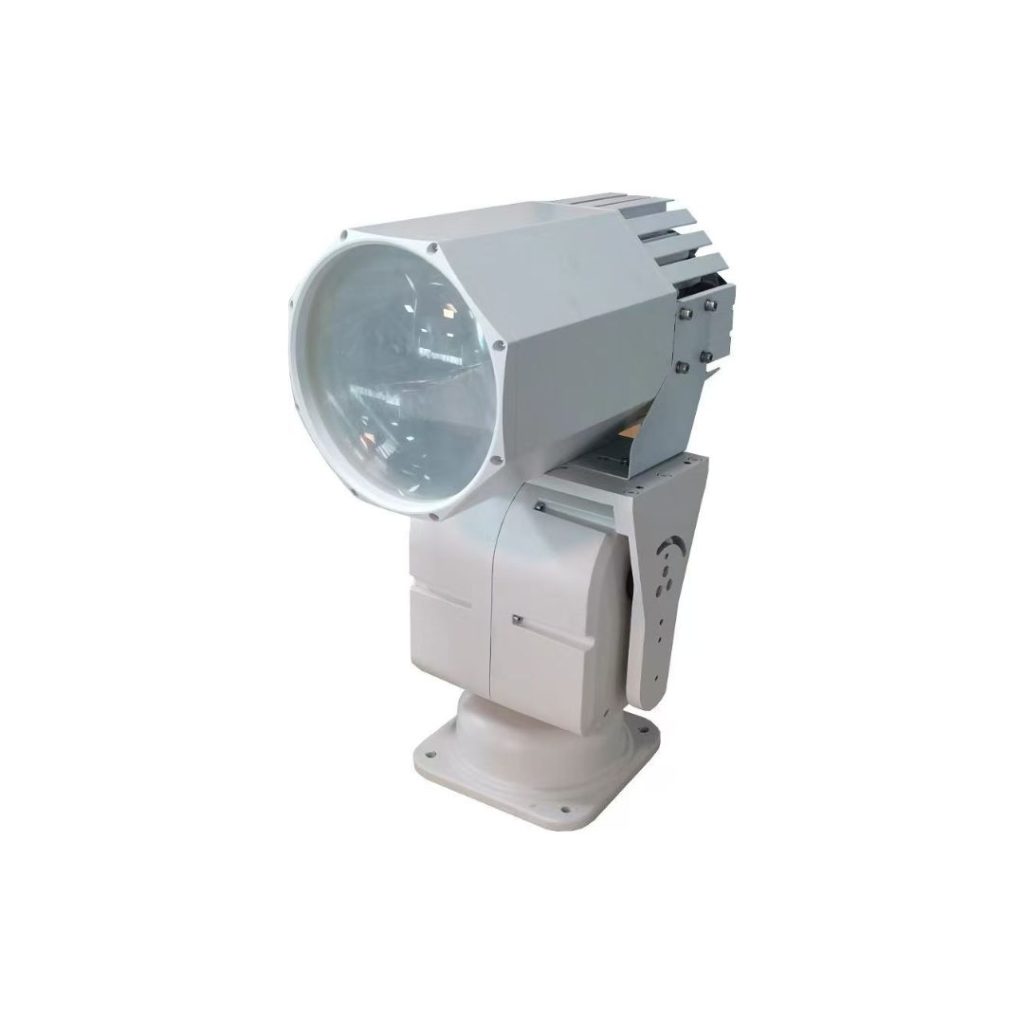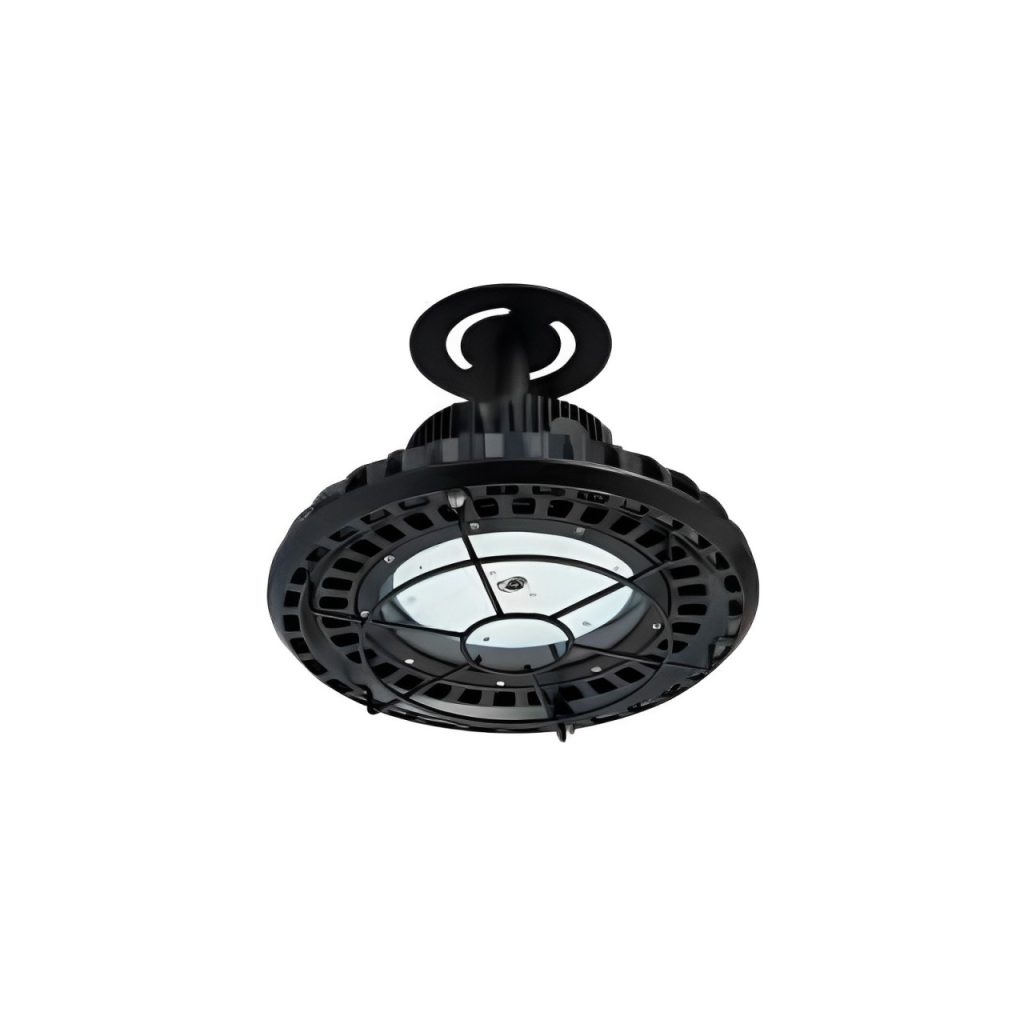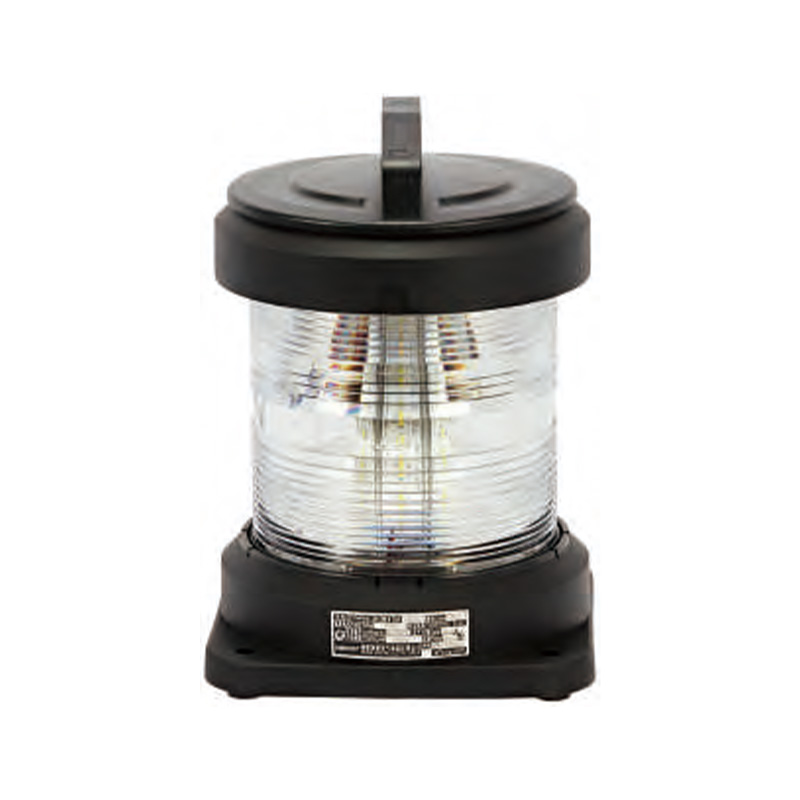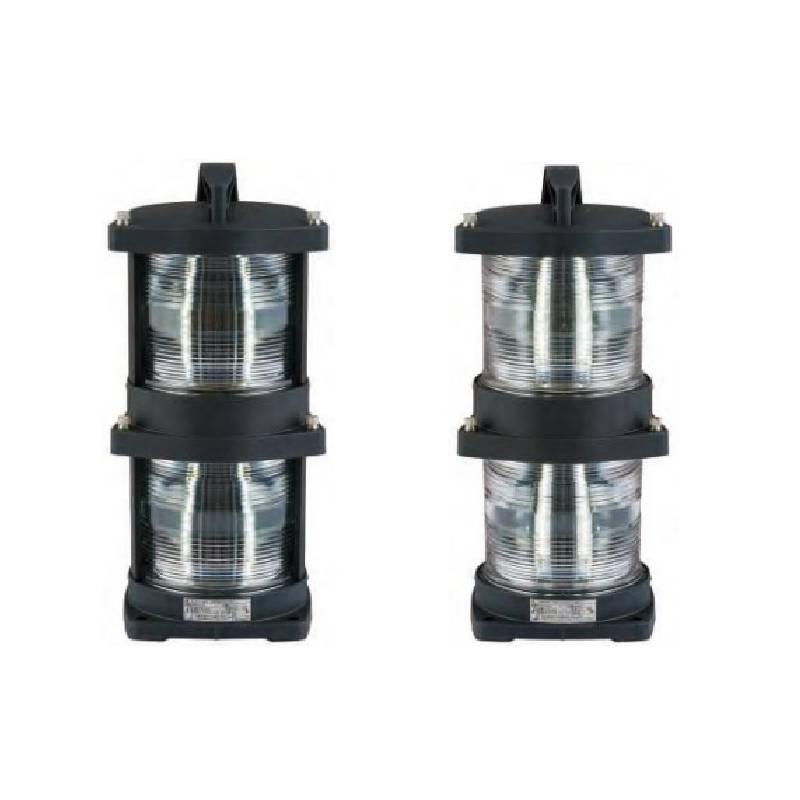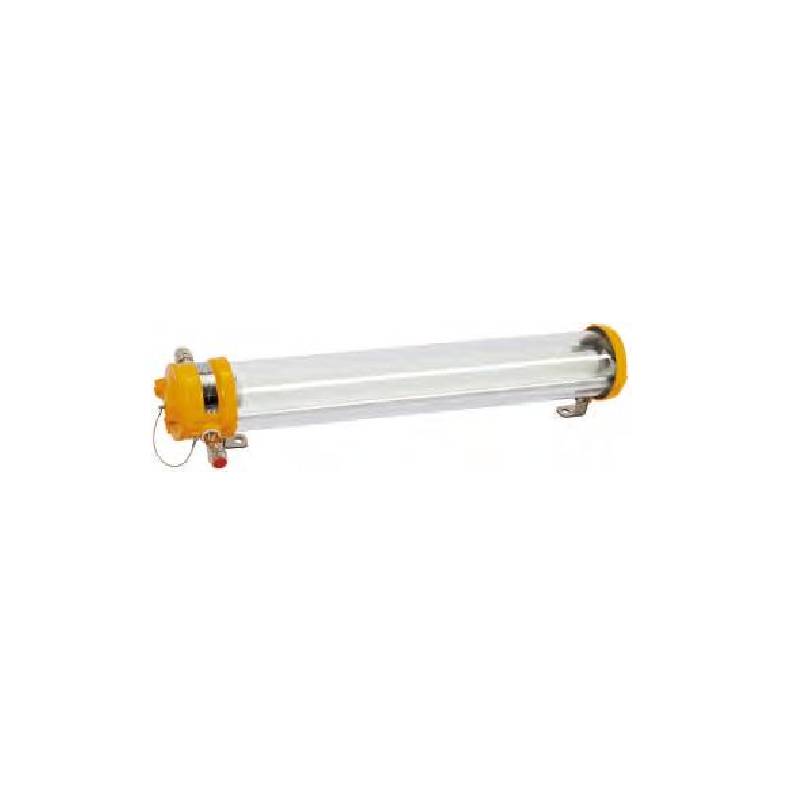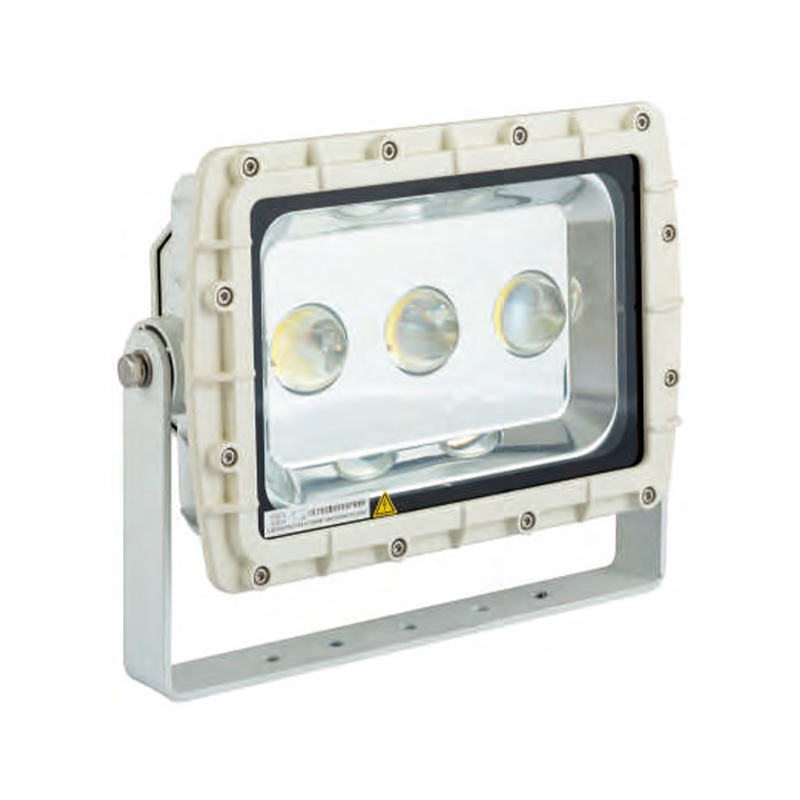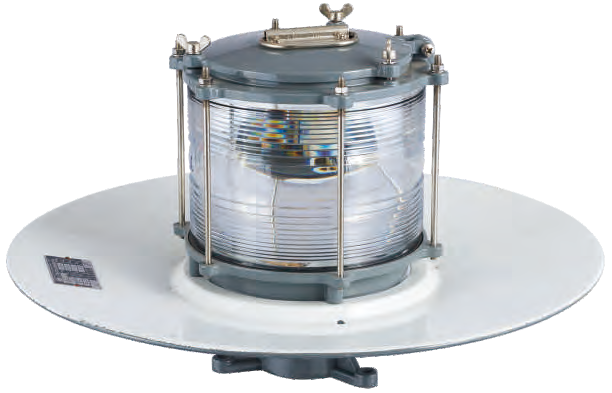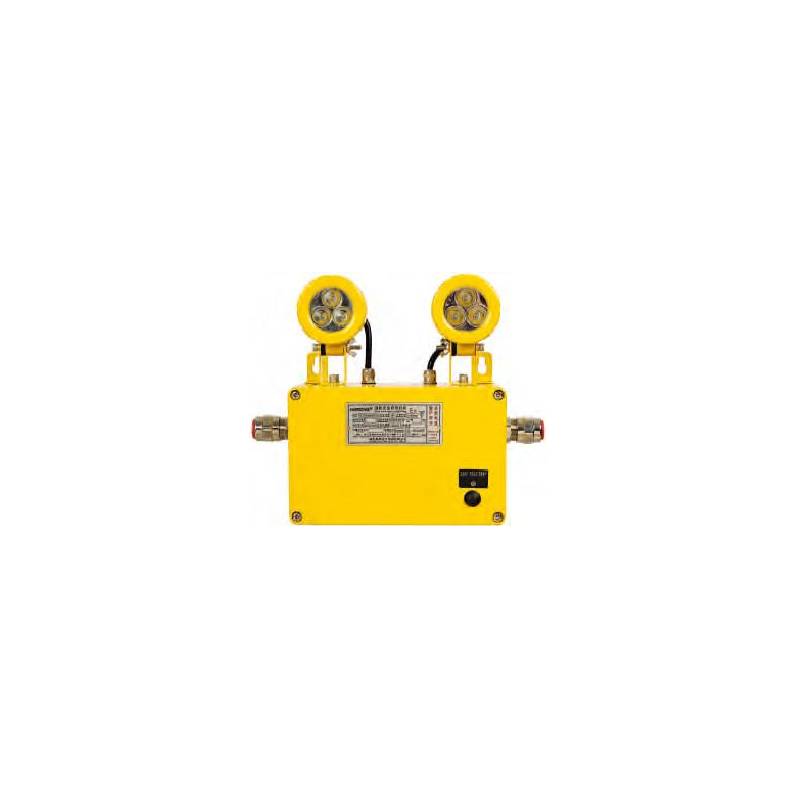What Types of Marine Lightings Can Explode Due to Arc Tube Rupture
Marine lighting involves more than just ensuring a suitable level of brightness; it involves safety and dependability. Every type of ship (cargo, yacht, or cruise liner) is subjected to rapid temperature shifts, saltwater spray, and vibrations. Thus, their lighting is specially made to withstand these conditions.
While these lighting conditions are well known, it is not widely known that problematic internal lamp structure failures, especially arc tube ruptures, pose a greater threat to safety and dependability. When this occurs, some kinds of ship lighting can actually explode.
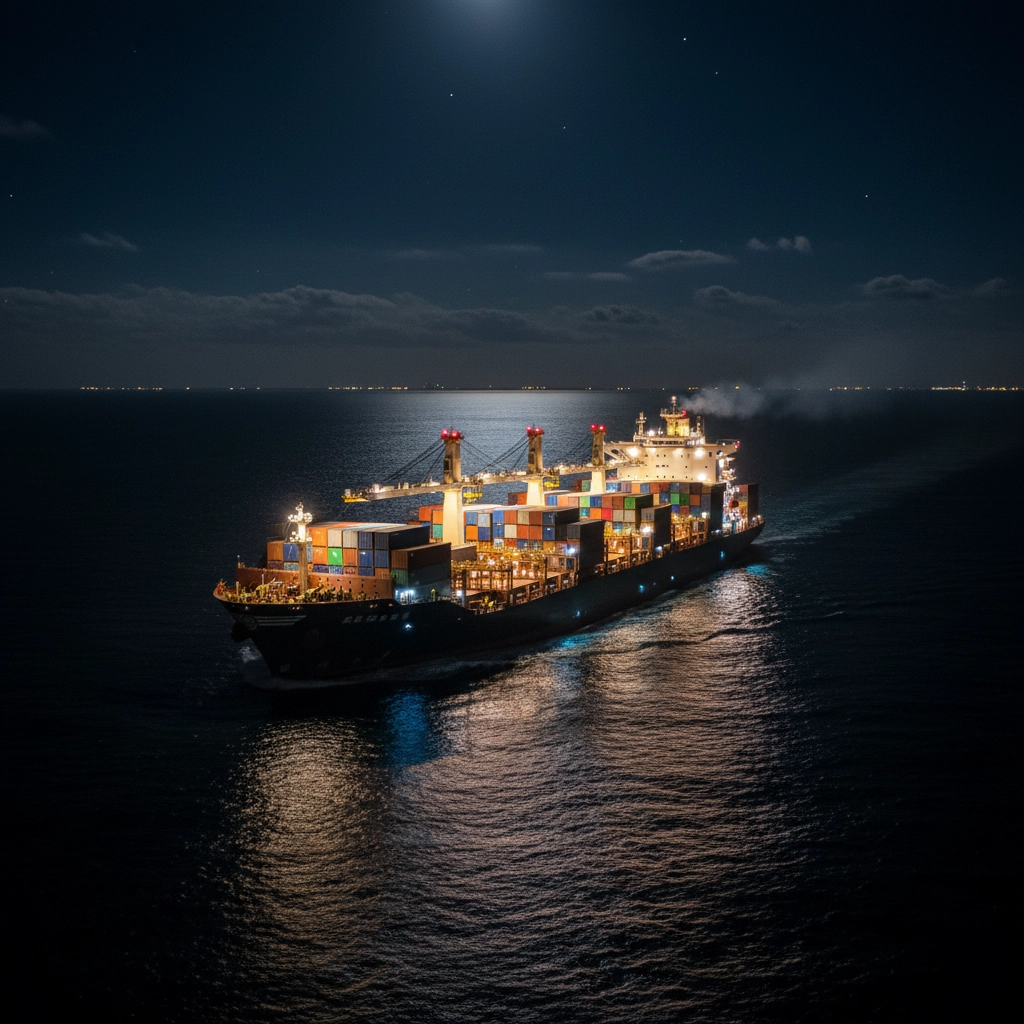
Table of Contents
What is Arc Tube Rupture
An arc tube refers to the small chamber found in some high-intensity discharge (HID) lamps which contains gas and metal salts. It produces intense light when the gas is heated and an electric arc is formed.
Within the tube overheating, vibration and microcracks cause the tube walls to weaken. When temperatures and pressures reach extremes, and the internal pressure exceeding the walls cracking pressure, the tube bursts.
This is termed arc tube rupture. When the lamp casing fails to contain the projecting parts, an explosion occurs, which is extremely dangerous to the personnel and machinery in the vicinity.
Lamp Types Most Likely to Explode
Not every marine lighting carries this risk. Only those containing high-pressure gas and arc tubes are prone to rupture.
| Lamp Type | Contains Arc Tube | Explosion Risk | Typical Marine Use |
| Metal Halide (MH) | Yes | ★★★★★ (High) | Deck floodlights, cargo area lighting |
| High-Pressure Mercury (MV) | Yes | ★★★☆☆ | Older navigation and work lights |
| High-Pressure Sodium (HPS) | Yes | ★★★☆☆ | Port or dock lighting (rare at sea) |
| Xenon Arc / Xenon Flash | Yes | ★★★★★ (High) | Searchlights, signal lights |
| HMI Lamps | Yes | ★★★★☆ | Film or inspection lighting (special ships) |
| Fluorescent / LED | No | ★☆☆☆☆ | Cabin and corridor lights |
Marine Lightings that are most liable to explosions because of failure of arc tubes are often metal halide, xenon, and xenon flashlamps. The construction of these lamps necessitates protective designs to contain explosion shards and mitigate damage during arc tube rupture.
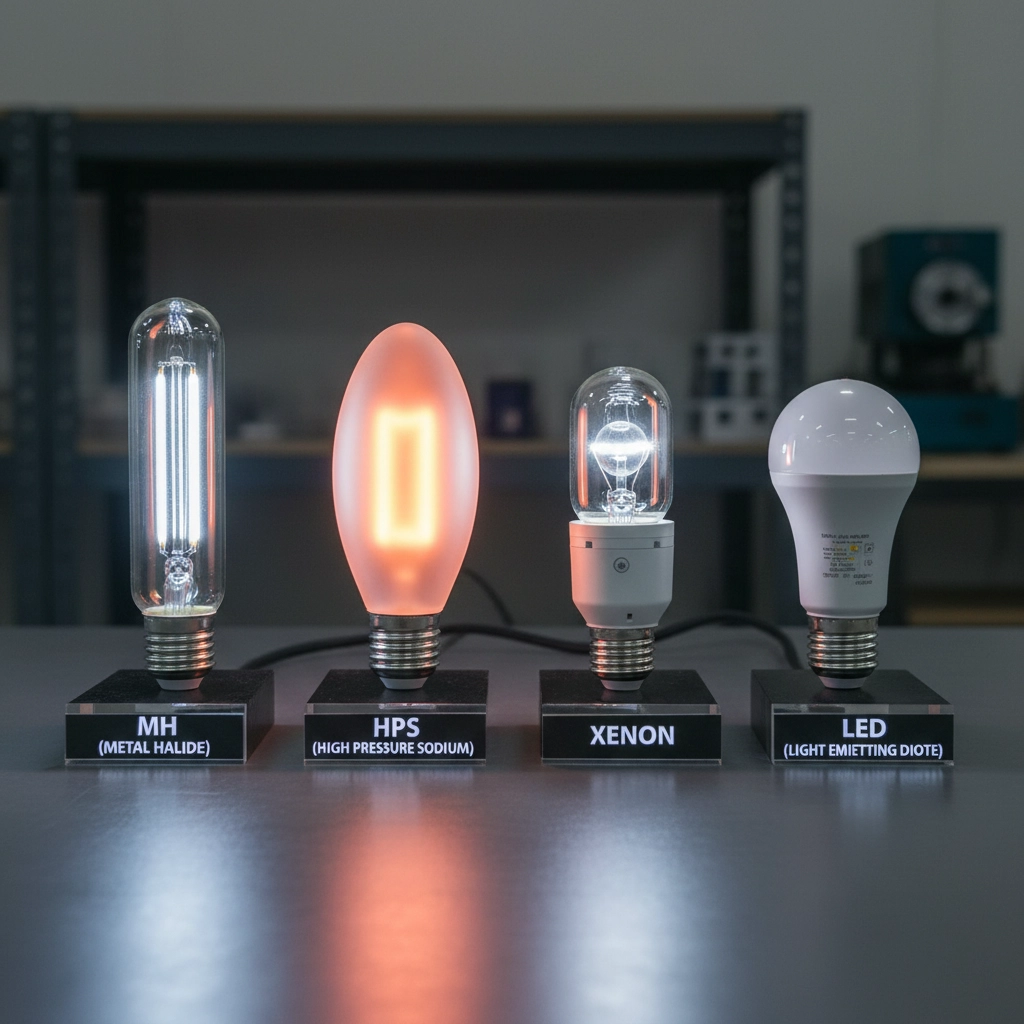
On a more practical and detailed level, there exists a more detailed classifying perspective lens: the same type of technology (for instance, metal halide lamps) can be classed as protected or unprotected. For instance, metal halide lamps can be classified as Type-E, Type-S, and Type-O in accordance to ANSI standards, depending on the presence or absence of built-in explosion safeguard.
In marine environments, if unprotected (Type-E/S) lamps are used or if they do not have sufficient fragment protection, the hazard is even more pronounced.
Why Are Shipboard Conditions More Likely To Have Acceleration Of Risk Of Explosion Of Marine Lightings?
Operating at sea can subject marine lighting fixtures to vibrations, power fluctuations, temperature changes, and salt spray. While these factors may seem insignificant individually, over time, even the most well-designed marine lighting fixtures can gradually and completely fail, creating a risk of explosion.
Vibration, shock, and mechanical load
With continuous vibration caused by machinery, engines, and waves, micro-movements inside the light occur. Loosened components, cracked welds, and insulation damage. Once the protective sealing is compromised, a simple short circuit or electric spark can ignite flammable gases in the air, causing an explosion.
Temperature Cycling and Thermal Shock
Being in the field, marine lightings frequently go through sudden temperature changes like when a hot lamp cools quickly during the sea winds or during the lamp’s on and off cycling. These changes in temperature cause expansion and later contraction, leading to small fissures forming in the glass covers or metal housings. Once these fissures are created, the explosion-proof enclosure loses its airtight integrity, allowing combustible vapors to enter the lamp and ignite when a spark occurs.
Salt Mist and Corrosion
Salt in the air acts like a slow but persistent chemical weapon. It corrodes metal parts and increases contact resistance at electrical joints. As corrosion worsens, the current passing through those joints generates heat or tiny electric arcs – both of which are potential ignition sources if the lamp’s internal pressure or sealing fails.
Power Fluctuations and Startup Surges
When Switch generators or large motors starts, voltage supply on board Fluctuates or even drop suddenly, leading to surges and transients on the shipboard electrical systems. Such Fluctuating electrical systems can cause the LED driver or light’s insulation layer to fail, which results in a short circuit or arcing. The danger is even greater where an arcing or spark is produced in a confined or gas-laden environment, as this greatly increases the risk of an explosion.
Material Aging and Concealed Cracks
As time goes by, factors like heat, moisture, and vibration cause insulation, seals, and casing to age and lose flexibility. The loss of elasticity causes soft, hidden cracks that routine inspection will miss. Once these gaps form, moisture or gas will seep through. Even a small internal spark will trigger a sequence of events that ends in an explosion.
What Kinds of Marine Lightings Should Be Focused On on Ships?
Not every onboard light poses the same level of danger. The greatest concern lies with high-power or high-voltage marine lightings installed in demanding environments — such as open decks or enclosed machinery spaces.
| Shipboard Application | Possible Arc / High-Voltage Lamp Types | Why These Lamps Are Used | Explosion Risk & Protection Focus |
| Exterior / Deck Searchlights / Spotlights | High-power metal halide, xenon, or HMI lamps | Required for long-range, high-intensity illumination | These lamps have high power and high ignition voltage, demanding excellent heat dissipation, shatter protection, and anti-vibration structures. |
| Cargo Holds / Warehouses / Maintenance Areas | Metal halide HID lamps (older designs) | Provide high brightness for large spaces | If older or without shatter protection, they pose higher risks. LED or fiber-optic lighting is recommended as a safer modern replacement. |
| Engine Rooms / Machinery Spaces / Auxiliary Compartments | HID or high-intensity discharge lamps | Require bright and moisture-resistant lighting | High ambient temperature, heavy vibration, and difficult maintenance make these critical high-risk zones. |
| Signal / Navigation / Stern / Side Lights | Halogen, gas-discharge, or mercury lamps (in older systems) | Ensure stable and reliable low-power light | Most navigation lights are now LED, but legacy or backup arc lamps should be inspected for explosion-proof integrity. |
| Emergency / Flashing Signal Lights | Xenon strobe or explosion-flash lamps | Used for emergency or warning signals | Operate at high peak voltage — proper insulation, housing strength, and discharge control are essential for safety. |
| Film / Photography / Projection Lighting (on cruise or production vessels) | HMI or xenon floodlights | Provide high brightness and stable color temperature | Though rare, such equipment must undergo strict safety assessment due to its extremely high ignition energy. |
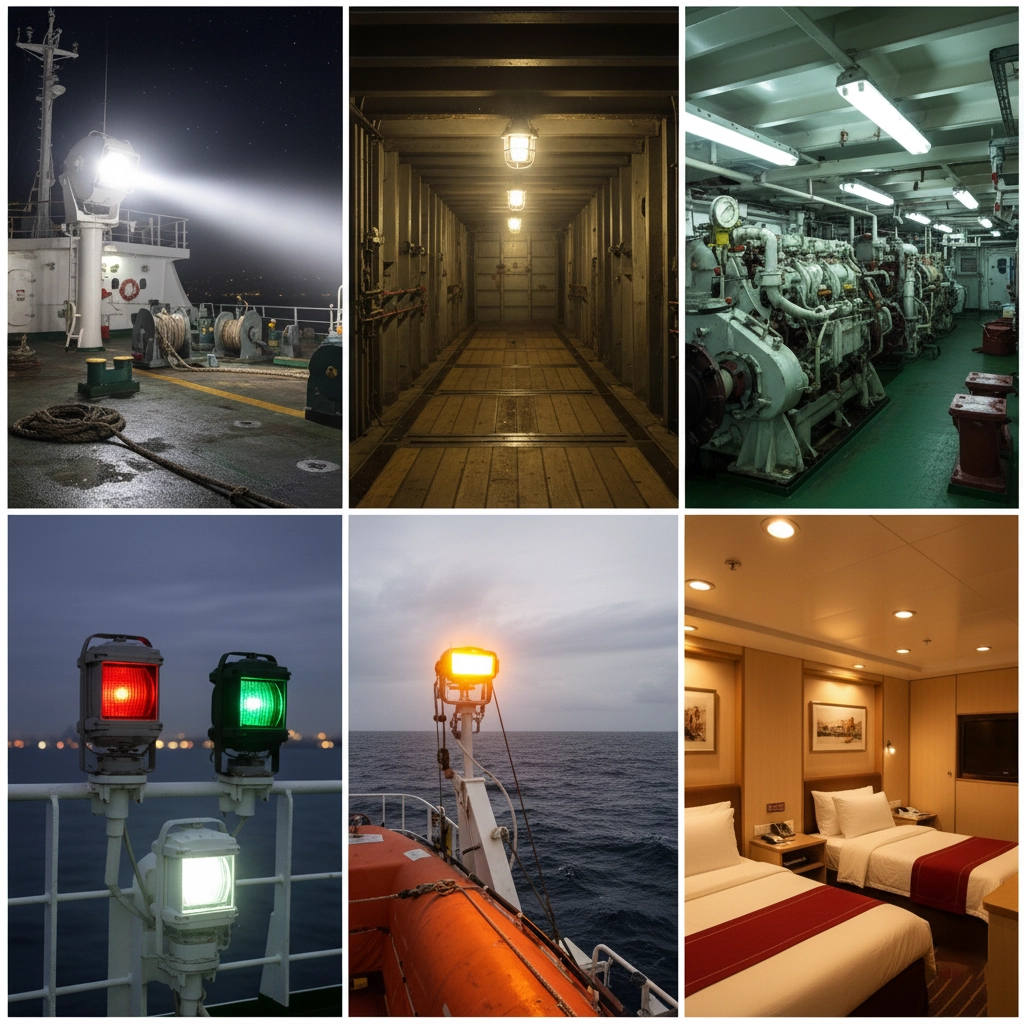
In these scenarios, the most important ones are those lamps with high power, high starting voltage, installed on open decks or overhead, difficult to maintain at close range, and more susceptible to mechanical or thermal stress.
How to Prevent Arc Tube Explosion of Marine Lightings
Preventing arc tube rupture isn’t only about compliance — it’s about protecting crew safety and vessel integrity. Proper selection and maintenance can effectively eliminate the risk.
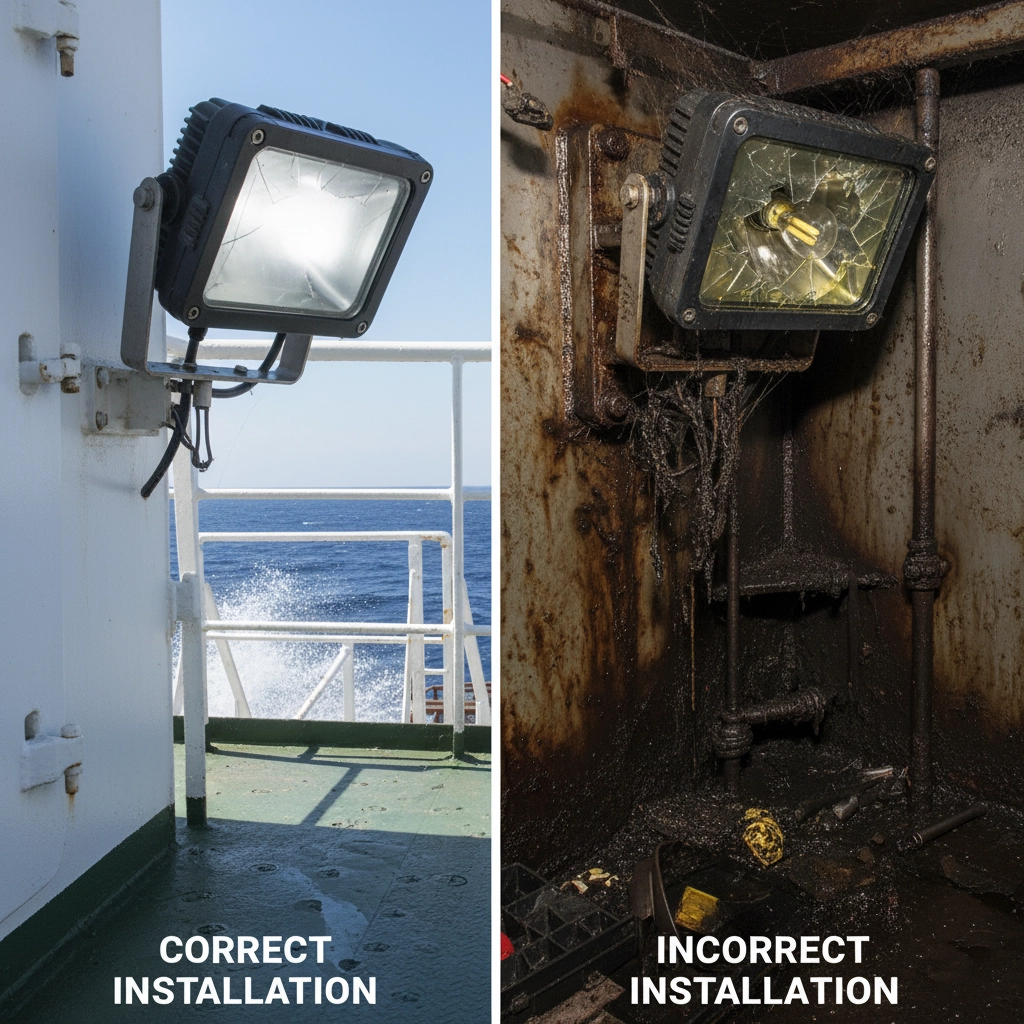
When You Have to Use HID Lamps
Sometimes, you just can’t do without HID lamps. They stand out for their brightness and superior color rendering. To minimize explosion hazards, select protected or enclosed lamps having safety shields. The housing must be impact-resistant and suitable for marine use. Also, follow safe maintenance practices by replacing lamps on schedule and inspecting for cracks or discoloration. Use appropriately matched ballasts and igniters with the lamp to avoid failures due to electrical stress.
Control Your Power Supply
One of the major causes of arc tube failures is unstable voltage. When it comes to marine electrical systems, during generator switching, surges, spikes, and startup transients are the norm.
To control these effects, do the following:
- Don’t forget to include voltage stabilizers, surge protectors, or soft-start circuits to limit ignition stress.
- Electrical noise or stray currents which could harm lighting drivers or ballasts can be prevented by proper grounding.
Every marine lighting fixture onboard benefits from the gadgets having a longer operational life as well as the reduction of the likelihood of the devices exploding due to a stable power supply.
Ensure Proper Ventilation and Heat Dissipation
Because both HID and LED lamps generate heat and accelerate the aging of seals and materials, long-term equipment aging is likely to cause marine lamps to explode. To avoid this, choose to install marine lightings in a well-ventilated area. Pay attention to the daily maintenance of the lamps and ensure that the heat sinks, vents and sinks are not blocked. This will extend the service life of the lamps as much as possible and reduce the risk of explosions.
Moving Toward LED Marine Lighting
Today’s modern LED marine floodlights and spotlights match the brightness of HID and metal halide lamps without the fragile and high-pressure arc tubes. With solid-state light emission, the LEDs do not have the risk of internal ruptures or explosions. The risk of shipboard lighting, in most cases, is most simplified and effective as preventative measures.
LED Marine floodlights, cabin lights and search lights fully explode proof performance, offered longer life spans and instant brightness. For extreme marine settings, like decks, docks and engine rooms, manufacturers such as Chongqing Yushuo designed high-temperature-resistant marine LED floodlights and searchlights.
For continuous shipboard operation, the lighting offers sealed and corrosion-resistant designs, and the anti-vibration and corrosion-resistant features make them reliable.
Final Thoughts
As long as early warning and timely maintenance are available for marine lighting, we recommend choosing LED as the light source whenever possible. This reduces the risk of arc tube rupture, ensures safer and more reliable navigation, and reduces operating costs.
Of course, we highly recommend LED marine lighting manufactured by Yushuo. We are a marine lighting manufacturer, allowing you to work directly with the manufacturer. We can also customize it to your needs. Please feel free to contact us.

